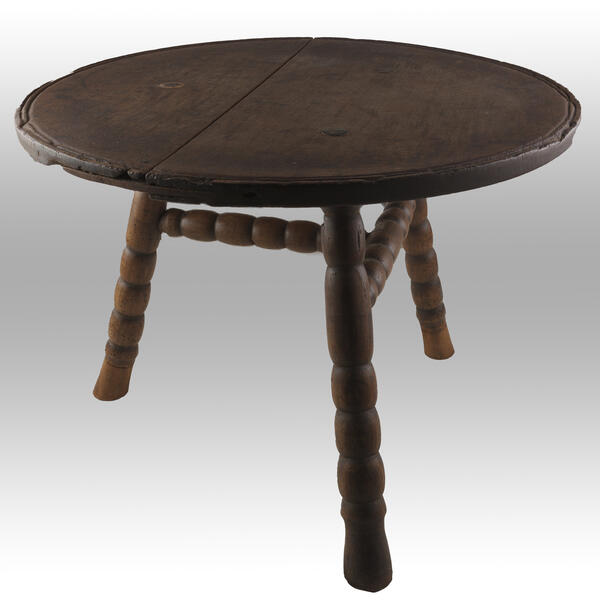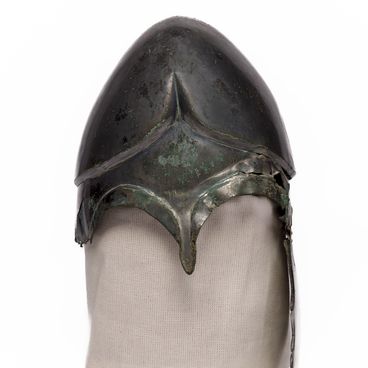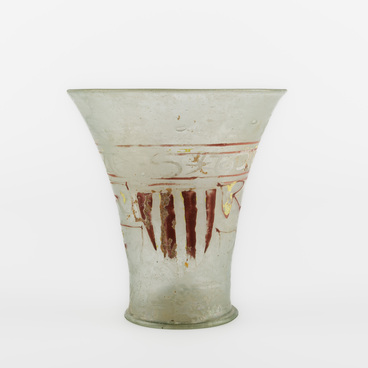The traditional Circassian “ane” table is a low table with a small round top resting on three low figured legs with crossbars. Despite the apparent simplicity, everything in its design is planned to the tiniest detail, which made the table popular with other peoples of the Caucasus. The image of this table with bread and salt is depicted on the state emblem of the Republic of Adygea.
Three legs instead of four, connected by a T-shaped crossbar, make a table more stable. This design prevented the table from toppling if it was accidentally touched, and it was very convenient to sit near it. As a rule, artisans made small chairs for the ane table. If the height of the Circassian table did not exceed 50 cm, then the height of the chairs was half as much. Such proportions forced those sitting at the table to take a pose that excluded the possibility of overeating, which favorably affected the health and appearance of a person. The ane table is mentioned in the ancient epic about the narts-warriors. In the Adyghe legends, ane symbolizes a sacred image of the home, family, hospitality and an object endowed with magical powers. In ancient times, the Circassians worshiped the “great luminary” as they called the sun, and tried to make most important household items in the shape of a circle. According to these traditions, a round table meant that everyone sitting at it was equal. Today, ane tables still symbolize hospitality, unity and equality of all those sitting around. Some travelers thought that an ane was a tray with legs. Indeed, the table was brought to the guests with food on it, and when the dishes were changed, this table was taken away and a new one was brought in.
The table from the permanent exhibition was donated to the museum in 1970 by a resident of Adygea, K.S. Nihai. It is small — only 43 cm high. It was convenient to carry such a table from one place to another, serve it and take it away without disturbing the guest. The table was made of ash wood, but traditionally ane tables were carved from a sycamore tree — one of the longest-lived plants on the planet.
Three legs instead of four, connected by a T-shaped crossbar, make a table more stable. This design prevented the table from toppling if it was accidentally touched, and it was very convenient to sit near it. As a rule, artisans made small chairs for the ane table. If the height of the Circassian table did not exceed 50 cm, then the height of the chairs was half as much. Such proportions forced those sitting at the table to take a pose that excluded the possibility of overeating, which favorably affected the health and appearance of a person. The ane table is mentioned in the ancient epic about the narts-warriors. In the Adyghe legends, ane symbolizes a sacred image of the home, family, hospitality and an object endowed with magical powers. In ancient times, the Circassians worshiped the “great luminary” as they called the sun, and tried to make most important household items in the shape of a circle. According to these traditions, a round table meant that everyone sitting at it was equal. Today, ane tables still symbolize hospitality, unity and equality of all those sitting around. Some travelers thought that an ane was a tray with legs. Indeed, the table was brought to the guests with food on it, and when the dishes were changed, this table was taken away and a new one was brought in.
The table from the permanent exhibition was donated to the museum in 1970 by a resident of Adygea, K.S. Nihai. It is small — only 43 cm high. It was convenient to carry such a table from one place to another, serve it and take it away without disturbing the guest. The table was made of ash wood, but traditionally ane tables were carved from a sycamore tree — one of the longest-lived plants on the planet.



